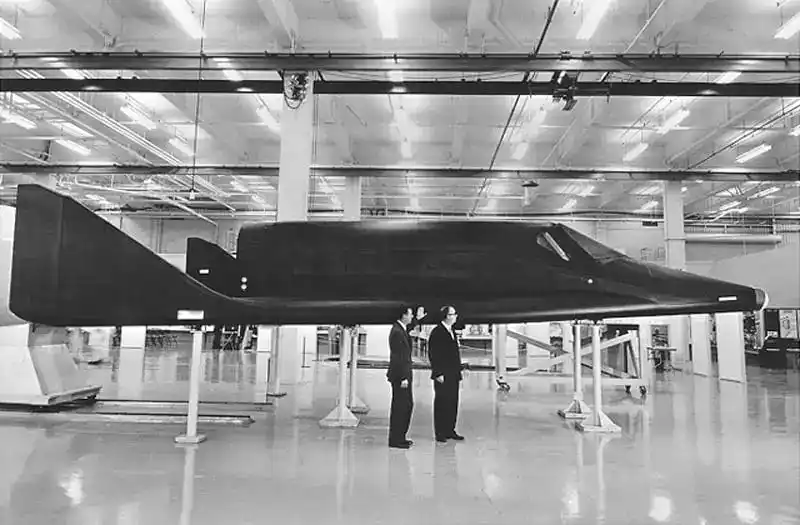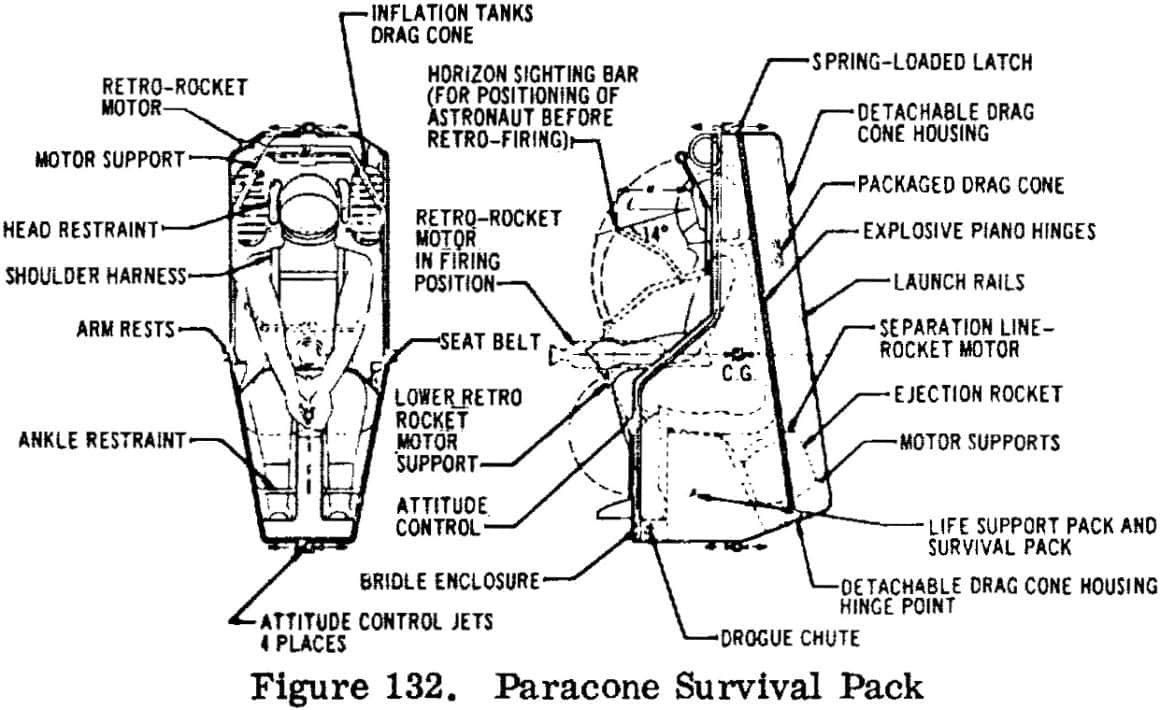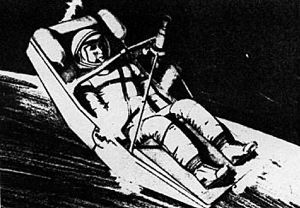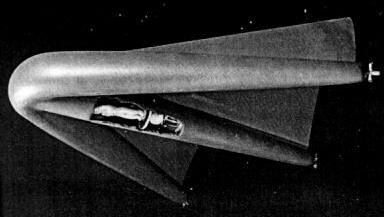When the US Air Force began planning for a manned orbital re-entry vehicle, it also identified a need to develop systems to allow crews to bail out from orbit. The development of the X-20 Dynasoar was one of the first of these aircraft. Engineers came up with three unique designs for bailout systems: the Paracone, the Moose, and the FIRST Glider.
The X-20 Dyna-Soar was an Early Design of a Reusable Orbital Spacecraft
In the 1960s, the Air Force and NASA were focused on developing reusable spacecraft or spaceplanes. The goal was for them to be launched by a rocket and then land like an airplane. One of these designs was the Boeing X-20 Dyna-Soar (Dynamic Soaring).

The Air Force plan was for the X-20 to be an orbital spacecraft. It would travel in the exoatmosphere, about 62 miles above sea level, a boundary level between Earth’s atmosphere and outer space. Flying at this level, the X-20 would gradually descend and then rely on its speed and the lift from its wings to bounce or skip to a higher altitude.
Eventually, the speed would reduce, and the X-20 would re-enter the atmosphere and glide to a landing in a similar way as the Space Shuttle decades later. While developing the X-20, engineers identified the need for it to have a system for pilots to bail out from orbit following a major system failure or even an enemy attack.
Douglas Paracone Allowed the Pilot to Re-enter With Only The Seat
In 1963, the simplest design allowing pilots of the X-20 and similar vehicles to bail out from orbit was the Douglas Paracone. This system was basically the pilot and his seat. After separating from the aircraft, the device would have a small solid rocket motor attached to struts above the pilot’s chest. The system also had cold jet thrusters, which the pilot would use to turn so he was facing in the proper orbital direction.

Next, the pilot began the procedure to bail out from orbit by igniting the rocket motor, and it would fire for 60 seconds, initiating the re-entry. The motor would then separate from the seat, and a lightweight Teflon-coated fabric shell would deploy around the pilot. Engineers determined the heat during the re-entry would not exceed the capacity of the pilot’s life support system.

The total weight of the Paracone and pilot would be about 500 pounds. The Paracone would reach 9.6 G’s during the bailout and come down without a parachute. Its terminal velocity would reach just 26.1 miles per hour and impact the ground, similar to the impact pilots would experience with conventional ejection seats.
Pilots Would Descend in Coffin-Sized General Electric Moose
The General Electric Moose was another system designed to allow pilots to bail out from orbit. Tested in 1963, it was basically a flexible, folded heat shield that the pilot would deploy by pulling a cord. The pilot also wore a chest-mounted parachute. Then the system would unfurl the shield into proper shape and surround the pilot’s back with a form-fitting polyurethane layer.

The pilot would use a small, hand-held gas device to maneuver the Moose to the correct angle for the re-entry and then fire a solid rocket motor. Once the pilot reached the atmosphere, he had the option of staying with the shield and landing on land or water, and the polyurethane foam would absorb the impact. The pilot also had the option to jettison the shield and make a parachute landing.
Much like with the Paracone, engineers determined that the heat during re-entry with the Moose would not exceed the limits of the pilot’s space suit backpack. General Electric initially designed it for a single pilot to bail out from orbit, but they also considered larger systems that could accommodate three or more crew members.
Aerojet FIRST Glider Allowed Pilots to Leave Orbit on Inflatable Wings
The Aerojet FIRST (Fabrication of Inflatable Re-entry Structures for Test) was a glider designed in 1960 to allow pilots to bail out from orbit. It had inflatable, flexible wings and a coffin-sized cylinder, and the entire system would be carried in a cylinder attached to the exterior of a spacecraft like the X-20. The wings were wire fabric impregnated with silicone.

In an emergency, the pilot would enter the cylinder, seal its hatch, and separate from the spacecraft. The wings would then inflate, and the pilot would use a gas system to adjust the angle of the FIRST for re-entry. A rocket would then fire for the re-entry.
Back in the Earth’s atmosphere, the glider would be moving close to the speed of sound at about 27,000 feet in altitude. Its landing speed would drop to about 24 mph, and just before touching down, it would be moving at just 5.59 mph.
In the event of an equipment failure, the pilot could blow the cylinder open, exit, and descend under his own parachute.
Late in the 1960s, as the Air Force and NASA turned to more modern aircraft and spacecraft, and the Paracone, Moose, and FIRST Glider programs were cancelled.
